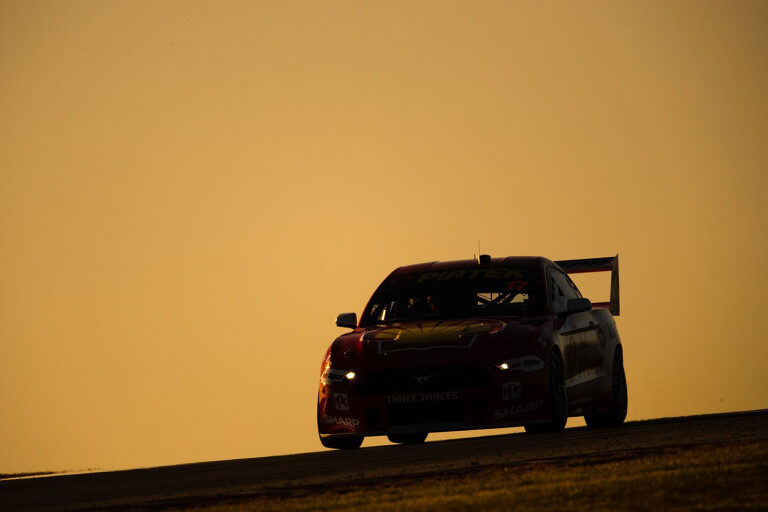
Supercars is set to introduce an all-new set of rules in 2022, dubbed Gen3, which will set the category on a path that will hopefully secure its future.
However, creating a whole new set of technical regulations isn’t the work of a minute. Supercars has created a Gen3 working commission to develop the new rules involving stakeholders from within the business and pit lane.
But not everyone is included in the inner sanctum. These are the three very different sets of voices that Wheels spoke to about how Supercars should go forward with Gen3, each laying their vision for the future on the table.
The heavy hitters
These are the men that have a direct influence over the future of the category. John Casey is Supercars’ chief strategy officer, and the man in charge of penning the Gen3 rulebook. Triple Eight Engineering head honcho Roland Dane is arguably the most influential team boss in pit lane and directly involved in any discussion of significance. Located in the US, Mark Rushbrook is Ford’s head of global motorsport, and personally controls the manufacturer’s involvement in the category.
The team players
While they aren’t directly involved in the Gen3 working group, Todd Kelly and Barry Ryan are two of the team bosses that will have to adapt to the new rules. Kelly is a technical guru, and his experience as a driver, team owner and engine builder makes him about as informed as they come. Ryan is one of the most outspoken team bosses in pit lane and comes armed with radical ideas that challenge the status quo. They both know what it takes to run a successful race team.
The outsiders
Tempering the voices of those that spend their time at the coal face is Tony Cochrane, the iron-fisted ex-Supercars czar, and Barry Rogers, director of Garry Rogers Motorsport which left the grid at the end of last year, and son to the eponymous Garry. A step removed from the sport, they offer independent balance to the rose-tinted enthusiasm of pit lane regulars. Who better to deliver a dose of reality than former insiders with no vested interest and nothing to lose?
It isn’t a stretch to say the Gen3 regulations are the most significant in Supercars’ history.
The onset of a global pandemic in COVID-19, and the disruption that has caused, has only increased the intensity of discussions at Supercars HQ. Securing a future for the sport is vital.
To have a chance at surviving the existential threats to the category’s survival, it needs to find solutions to four key questions: what will the cars will look like, what engines will be used, will they need manufacturer support, and how will they keep fans engaged?
So, let’s get into it.
.jpg )
WHAT WILL THE CARS LOOK LIKE?
If you took the panels of a Ford Mustang road car and tried to affix them to Scott McLaughlin’s race car, they wouldn’t fit. That is a hard, unfortunate fact – one created by the current chassis which was introduced in 2013 to suit four-door Commodores and Falcons.
Now, with those production cars extinct, the category needs a new skeleton to sit beneath the racers’ composite panels. There are multiple ‘ready made’ formulas the category could adopt but instead Supercars has opted for a slight tweak to its current ruleset.
John Casey is the man in charge of the Gen3 rules, and he is focused on ensuring the racers look similar to a road-faring version.
“I’d characterise the Gen3 cars as much more of a return to showroom dimensions,” he says. “Obviously if we are representing a car or a brand on the grid, we need to make sure that we do that in a faithful way, returning to road car dimensions.
“That will give [manufacturers] comfort. We won’t be moving from the DNA of what a Supercar is – they look awesome, they look fierce, they sound amazing. But at the end of the day they are accessible cars in the mindset of the fans. They are not exotica, they are not a GT3. They are cars people can relate to.”
That’s debatable. Are fans more attracted to a Mustang with no mechanical relation to its road-going counterpart than they are to production-based GT3 machinery? Positive fan reactions to the exotic unobtanium that tackles the Bathurst 12 Hour each year indicates ‘relatable’ perhaps isn’t the crowd puller it once was.
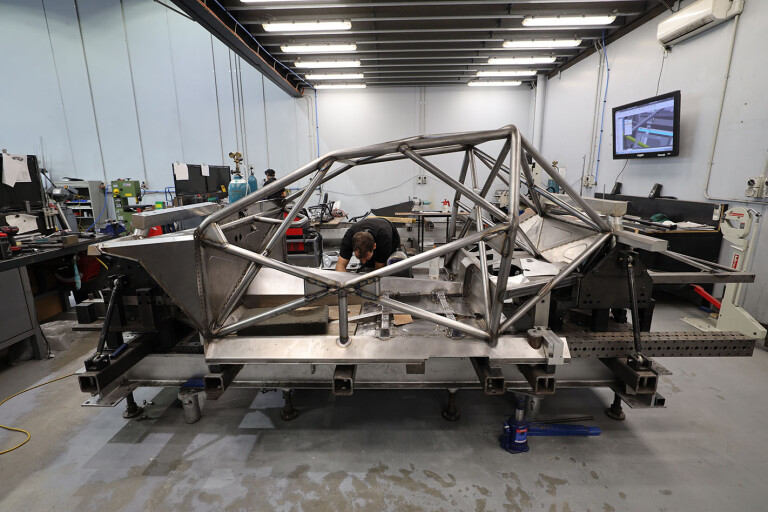
Still, the new control chassis will allow for greater variety. Different bodystyles, including two-door coupes, a five-door liftback, and traditional sedans, will all be accommodated, as will different wheelbases. This last point is significant. Previously manufacturers had to build Frankenstein interpretations of road cars to fit the existing control chassis. Mid- or rear-engine layouts are categorically off limits, and power will be delivered to the rear wheels exclusively.
It’s understood Roland Dane’s Triple Eight Engineering team is leading development of the new flexible chassis, under the guidance of Supercars head of motorsport Adrian Burgess. As one of the most senior figures in the pit lane, Dane’s support of Gen3 is vital.
“We need to get back to the cars looking like the road cars, but be difficult to drive, loud, and spectacular to watch,” Dane says.
Even Ford Performance’s Mark Rushbrook supports a change.
“There are some improvements that we think can be made in the proportions of the car, and be more true to the road car,” he explains.
Erebus team boss Barry Ryan would prefer a more radical strategy: “I think it should just be a Supercar,” he says. “Not a brand but a car that isn’t aligned to any manufacturer.”
Supercars says it wants to cut the cost of building and running a car by 50 percent, but according to Barry Rogers, that’s not enough.
“If you could cut costs by two thirds of what they were a couple years ago, you are probably getting somewhere nearer where it should be,” he tells Wheels.
“The better teams in pit lane could be spending up to $8-10 million on a two-car operation. The average two car team is probably spending around $5 million a year, and really that needs to be down to a million dollars per car.”
That target from Supercars was initially more conservative, but the COVID-19 pandemic has prompted the category to be more ambitious, despite parts of pitlane baying for aggressive cost-cutting for some time now.
“Since 2013 and a bit prior, we were constantly through working commissions etcetera, on about the costs and got shot down because there are so many vested interests in the business,” Rogers adds.
“Now, with the way the economy is, the things that we had been pushing for close on 10 years are now starting to come into play in terms of cost saving.”
Even a large manufacturer like Ford is pushing for more significant savings for teams with the new car.
“Reducing costs is important for everyone. It is important for our teams, and therefore it is important for us,” Rushbrook says.
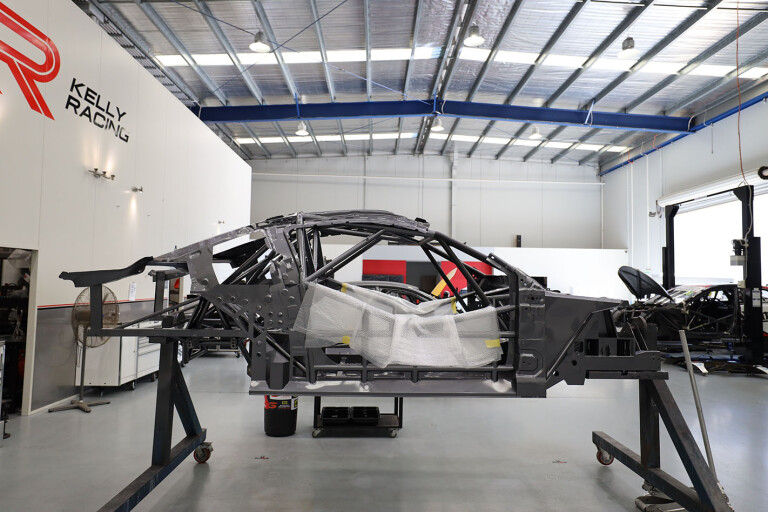
Supercars is currently in the final stages of approving the new chassis and says while the current ‘Car of the Future’ example has served the sport well, it no longer suits the raft of vehicles on sale in Australia’s ultra-diverse new car market.
“Car design has moved on significantly, but the chassis stayed the same,” Casey explains.
“There is nothing wrong with the current chassis – it is incredibly strong and safe and relatively inexpensive and has served the sport amazingly well. It’s just time for a refresh.
“We are very clear on the target cost, but there is still some decisions that need to be made around how we execute that.”
One of the changes that will be most notable with the new chassis, is a drop in aerodynamic performance. While the cars will retain wings and spoilers to make them look aggressive, they will have more of a visual impact than an aerodynamic one.
“The result of that will be that we will be able to make the cars race closer together,” Casey adds.
This sentiment is supported by Dane, who believes “the cars need to be overpowered ,under tyred, a bit of a handful to drive, and look like road cars with a bit of a spoiler.”
Fans can also expect to hear increased discussions around control components. Supercars is likely to lock down development of the new chassis, preventing teams from engaging in a technical arms race.
Supercars teams will still be allowed freedom in terms of race settings but will no longer be able to create componentry themselves.
“There will still be opportunities to set cars up, we aren’t going to take that away,” Casey says. There
“will still be set-up problems to solve, but we hope to move more of the competition onto the race track and lessen the competition from the garages.”
Again, Dane is supportive of the messaging coming from Supercars in this area.
“We need to maintain or increase the number of standard components on the car,” he explains.
“We also need to have adjustability in the car. Every car has had an identical rear end since 2013 in terms of the mechanicals. But it is still adjustable. So that is something that in the context of standardising the front end, we should still have adjustment so people can get it right or wrong, frankly.”
The Triple Eight boss would also like this new generation of car to be simpler to run and maintain, making the sport more accessible for smaller teams, and more affordable for bigger ones.
“The car mustn’t be dependent on too many people to keep it running, to give you the flexibility to respond to the market,” he adds.
Critically, with the sport aiming to introduce variety in body shapes and styles, Dane supports the Supercars technical team to maintain parity across all the cars.
“In the 17 years that I have been involved now, there has only ever been one cock up,” he says emphatically.
“I would say that the track record of the category as a whole has been as good as anywhere in the world.
“The technical department is more than capable of handling what we are envisaging about the formula going forward.”
.jpg )
WHICH ENGINES WILL THEY USE?
There is near universal agreement that Supercars will continue to be powered by a naturally aspirated V8 in the future. The debate hinges on from where those engines will be sourced.
Currently, engine costs are “out of control”, with a two-car team spending upwards of $500,000 a season before factoring in development. Todd Kelly was still wiping grease off his hands from an engine rebuild when talking to Wheels.
“The engines in the cars are so technical and expensive to design and build and run and maintain. And it doesn’t have any impact on the end product,” Kelly says. “You could have 15 less horsepower, have just as good racing, and save half a million dollars a year on your engine budget.”
Dane also suggests that a slight reduction in power from the current circa 485kW figure will save teams hundreds of thousands of dollars without removing any of the category’s spectacle. The core logic is that de-stressing the engine by just a small amount will reduce maintenance costs significantly.
“What we want is a naturally aspirated V8 engine that produces a very similar power-to-weight ratio to today,” he says. “There’s no question we can make a car lighter than we do today, and therefore we can have a power-to-weight ratio that‘s similar to today, but with a bit less horsepower than we have now.”
Currently Holden and Ford 5.0-litre pushrod V8 designs power the field, but for 2022 these could be phased out. Instead, Supercars looks set to shift to a cheaper, ‘crate’ engine format, which some estimate could cost as little as $40K per car.
“We will just be taking advantage of the most contemporary engine options, design and availability,” Casey confirms.
.jpg )
Unlike the chassis, Supercars hasn’t reached the final stages of planning for Gen3 engine rules. This means there are a number of unknown factors, like where engines will be sourced, how many different engines will be available, who will be responsible for the development process, and what kind of power they will produce. Simply tweaking the current regs is also on the table.
One plan is for Supercars to develop a universal engine that is used by all teams, which Wheels understands could be based on Ford’s Coyote 5.0-litre V8. However, that is something unlikely to get support from Ford’s head office in Detroit.
“We think that brand identity is very important for us, and our competitors, and we think it would be confusing for the sport, for the fans, if there was a Ford or Ford-based engine in another brand’s body. We would not be in support of doing that,” Rushbrook explains.
Generalist fans won’t notice, or perhaps care, but dedicated motorsport fanatics are likely to turn their nose up at the hypothetical situation of a Ford-based V8 used in a GM body.
Roland Dane’s ideal scenario would be for teams to still choose what engine they run in their respective cars, instead of a one-size-fits-all situation.
“What we want is a V8 naturally aspirated engine that produces a very similar power to weight ratio to today,” he says.
“It is no question we can make a car lighter than we do today, and therefore we can have a power to weigh ratio that is similar to today, but with a bit less horsepower than we have got today. That then makes it easier, and gives you more choices – whether it is one engine or two, or you allow people to bring an engine in. That is something Supercars is still debating.
“They have all got to be, obviously, paratised and equalised in terms of performance and fuel economy.”
.jpg )
Dane is opposed to the term ‘crate engine’ but recognises that there are more affordable options available to the category than what is currently in place.
The pit lane heavyweight referenced Triple Eight’s experience with GT3 racing, where it fields a Mercedes-AMG GT GT3, as an example of how engine performance and associated cost can be better controlled.
“The engines in those cars they produce in GT3 form around 410kW, but they can produce 447kW in a heartbeat without the restrictor,” he adds.
“Those engines are V8 naturally aspirated, and do 20,500km between rebuilds. That is getting on for double what a Supercar season is likely to be in the future.
“At our highest mileage engine so far at 12,000km we haven’t seen any decrease in performance. None. It is perfectly possible with modern technology and modern engine architecture – double overhead cams not pushrods – to get to the level that would give us a power to weight ratio to still make our cars difficult to drive so you and I will struggle with them.
“If they are too easy to drive, they will lose an awful lot of their appeal.”
According to former Supercars head honcho Tony Cochrane, what is under the bonnet of the race car doesn’t matter, as long as it is a V8.
“People love to harp on about how the engine technology is old world, and people are going electric, but the truth of the matter is that if you go back to the height of our popularity and we used to poll and research our fanbase extensively – they loved the fact that it was V8s,” he tells Wheels.
“There are a couple of very good reasons for that. Firstly, it is very loud. It is just part of the entertainment package.
“Secondly, it is aspirational. You mightn’t have a V8 car, but I suspect deep down inside of every motorsport enthusiast they would love to own a V8 car. It is still the epitome of what is a real engine.”
Cochrane adds that having an engine in the race car that matches the road-going version isn’t necessary.
“The average guy is going to a Supercar event because of the entertainment factor, not because it is a showroom floor. Win on Sunday, sell on Monday is long gone. It is an entertainment package,” he explains.
Ford has requested the category future-proof for electrification in the near future. While Rushbrook doesn’t expect hybrids to be used in 2022, he doesn’t want to shut the door completely.
“You can only do a new car every so often, and if we are doing a new car for ’22 and it has got to last for five years or more, we are probably going to want hybrid within those five years, so let’s make sure we have got a design that will allow it to be built in,” he says.
Until then, Supercars will remain exclusively V8-powered.
.jpg )
WILL THEY NEED MANUFACTURERS?
Of all the challenges facing Supercars, this is the most complex. It boils down to a simple truth: Supercars doesn’t want to rely on manufacturer involvement but it needs manufacturers to be involved to make the category interesting and relevant. Navigating that middle ground is a murky process.
Supercars has been bullish in its intention to reduce the reliance on manufacturers, but it does have a plan to entice new brands to the sport without the need to invest millions of dollars.
“I think we need to be asking [OEMs] for approval to run their car on the track but not asking them for money to do so,” says Casey. “It will literally just be the approval to represent their product on track.”
At face value, this makes sense. At a time when the world economy is contracting and car brands are laying off thousands of staff, dropping big bucks on a racing program is unlikely to be a priority. Wheels spoke to several manufacturers rumoured to be considering joining Supercars and they all said they had zero intention of doing so.
Part of this plan is limiting the amount of technical freedom in the body homologation process, something exploited to great success by Ford. Supercars has stated it intends to oversee all future body homologations (perhaps in conjunction with a manufacturer), and absorb the associated cost internally.
“Obviously if we are representing a car or a brand on the grid, we need to make sure that we do that in a faithful way, returning to road car dimensions where panels and glass houses are interchangeable, etcetera,” Casey explained. “That will give [manufacturers] comfort.”
“But I think we need to be asking them for approval to run the car on the track, but not asking them for money to do so.
“I think what you will find moving forward is Supercars will take on the cost of homologating cars. That doesn’t mean we won’t welcome manufacturer participation in the sport, but we don’t necessarily rely on it either.”
When asked for clarification around Supercars taking on the cost of homologation, Casey explained that the category would do this by developing the panels and aero itself, leaving the manufacturer to simply sign-off on the use of its intellectual property.
“It would literally just be the approval to represent their product on track,” he added.
What Casey’s plan fails to consider, however, is how protective manufacturers are of their reputation. Giving their car’s likeness to a third party with no control over the results is hardly an attractive proposition, which is partly the reason Mercedes-Benz Australia distanced itself when Erebus used a backdoor partnership to run E63s. Casey is aware of the issue: “Some manufacturers will choose to not be represented on the race track, and that is totally their call,” he says.
The bigger challenge, however, is that Ford is vehemently opposed to the idea of Supercars controlling body homologation.
“In our experience it cannot be done separately, and nor would we want it to be done separately,” says Rushbrook. “If the series wants to do the body, then it is not our body, and we wouldn’t be in the sport.”
Further complicating matters is Rushbrook’s assertion that Supercars needs to attract other manufacturers for it to compete against, otherwise Ford could walk away.
“Competing against other manufacturers is very important for us; that’s part of our story,” Rushbrook says. “We want to show what we are capable of against other manufacturers, and if they are not there, then that part of the story falls away.”
If Ford was to retract its factory support of the category, it would leave Supercars with no official manufacturer involvement.

Tony Cochrane is adamant that Supercars must keep Ford involved, and retain some semblance of General Motors’ presence in the category.
“Whether you like it or not, Australian motorsport at the big end has always survived on a big rivalry. The rivalry has been created between the blue guys being Ford and the red guys being what was Holden,” he explains.
“I don’t believe going forward you can maintain that level of enthusiasm unless there is some still some blue v red rivalry somehow blended into the mix.
“Does that mean you can add other manufacturers, of course it does. But the reality is you have to have a series of blue and red guys.
“What chariots they are running around in is then a motorsport debate, but it is mission critical to find a way to have Ford and GM in the mix.
“Whether you like my opinion or not doesn’t matter, I have got history on my side. The history states that for a very long period of time, going right back into the ‘70s, there has been that rivalry.”
Oh, and as for win on Sunday, sell on Monday? Rushbrook says that ethos is still very much in place, but with a slight twist.
“We have data that supports that actually, from a lot of different sources,” he says.
“We are able to measure what our involvement does for selling vehicles. As well as the difference between winning, and just being on the track. Winning is important for our customers and instilling in them a sense of pride about owning a Ford vehicle.
“NASCAR as an example. Even though we are racing a Mustang on track, we sell a tonne of F-150s to NASCAR fans. Even though they have come to watch the Mustang on track, they see it as a Ford, and that makes them want an F-150 when they go to buy a truck.”
Todd Kelly is uniquely suited to commenting on what it takes to bring a new manufacturer to the sport, being responsible for fielding the factory Nissan Altimas when the Japanese company was committed to the sport.
“It is a pretty big job nowadays for any new brand or manufacture to come into the sport, and almost impossible to be competitive,” he says.
One team that could bring a new brand to the category is Walkinshaw Andretti Unit. Team co-owner Ryan Walkinshaw has recently stated he had “at least” two manufactures ready to sign up for 2021 before COVID-19, and he remains confident of bringing a rival for Ford to the sport.
Similarly, Dane has told Race News his team will not race Holden Commodores in 2022 and will bring a new manufacture to the sport.
“We have another manufacturer. We know what we’re doing,” he said.
Exactly what that deal might look like is unclear, but what is obvious is that Supercars needs to find a model that works for both the sport and manufacturers.
Getting this right will determine the sport’s financial future, how the grid will look, and how fans respond to the cars. We don’t envy them.
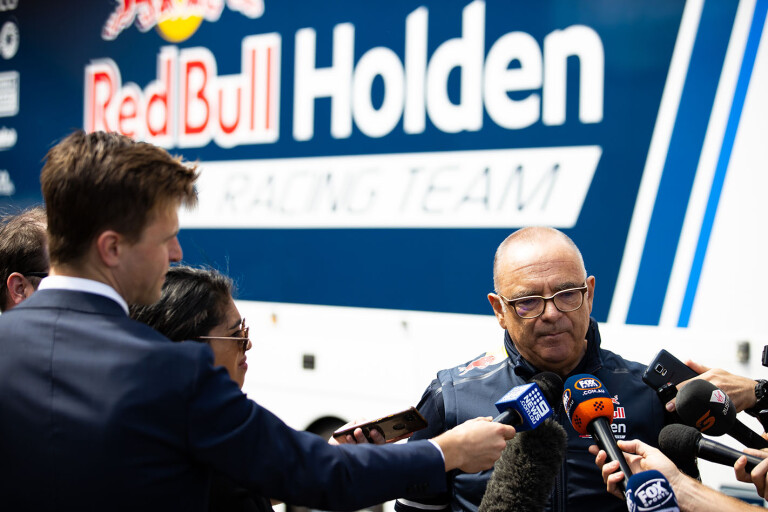
HOW WILL THEY CONVINCE YOU TO WATCH / BUY TICKETS?
There is no race series without fans, and according to ex-Supercars CEO Tony Cochrane, who steered the sport into its most profitable and popular era, the category needs to act quickly to save the fans it has left and ensure its survival.
“Keeping the current fanbase is mission critical,” he tells Wheels.
Cochrane and three other investors purchased promotion rights for the ATCC in 1996 for $52,000. By 2011 the business was valued at $330 million, with Cochrane retiring as executive chairman in 2012. He believes Supercars must aim for entertainment over technical perfection when finalising its Gen3 rules.
“The guy standing in the grandstand isn’t so impacted about the latest, greatest, ‘you beaut’ braking system. He is actually more interested in the cars losing their brakes, because he is going to see a better spectacle,” Cochrane explains.
For Supercars, there are two core areas of improvement for fan engagement. The first is the on-track action.
“We are looking to improve the show by reducing the contribution to the car’s performance that is currently delivered by aerodynamics,” Casey explains. “At the end of the day we are about providing awesome motorsport entertainment for our fans. If we think we can improve the racing, that ticks a lot of boxes.”
The second area for improved fan engagement is the television deal. For the last five years Australians have had to pay to watch the category live. However, a new deal is being negotiated which is likely to result in a greater free-to-air television presence, lowering the barrier of entry for television eyeballs. It is understood a pay element could remain. But increasing the number of eyes on the telly and bums in the grandstand is just a small portion of Supercars’ ever-growing to-do list.
There’s no question 2022 marks the most important rule change for the sport since the beginning of the V8 era. If Supercars is to meet its own self-imposed deadline, it has roughly eighteen months to oversee the introduction of a complex set of rules.
A new control chassis must be signed-off and be capable of allowing vastly different body shapes to compete without differing too much from their road faring donors. The engine formula which has existed for multiple decades needs to be overhauled, and manufacturers need convincing they should hand over their intellectual property, while the category vows it doesn’t rely on OEMs anymore.
The survival of the sport depends on each challenge being overcome, and the 2022 deadline being hit. Miss it, and it could be too late. If the rules don’t have the intended impact, a slow, painful demise could follow. There will not be any second chances.
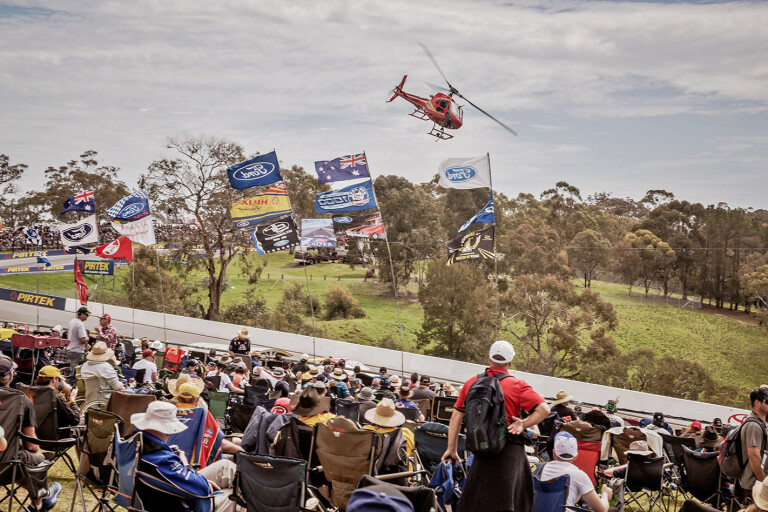

COMMENTS